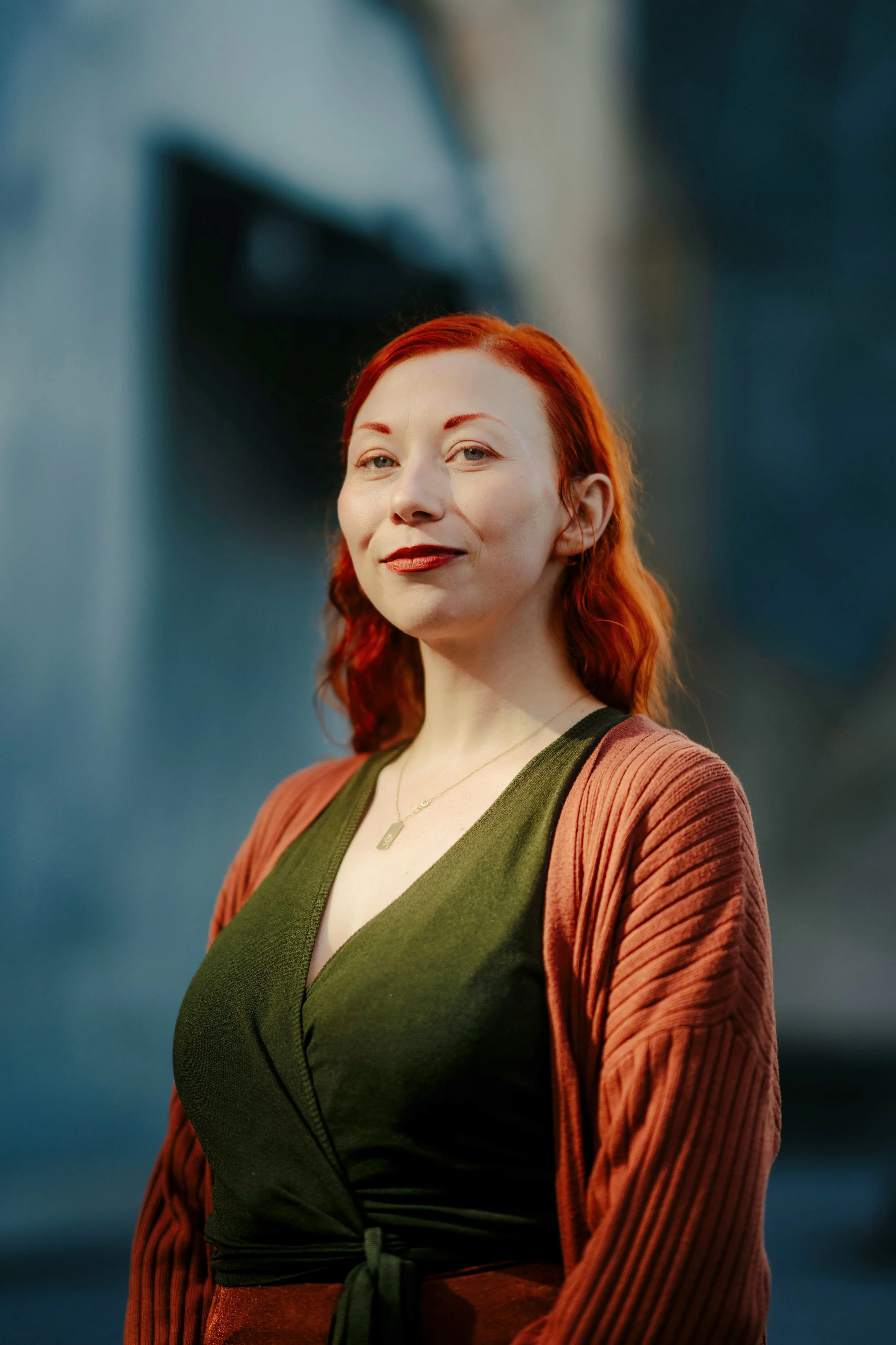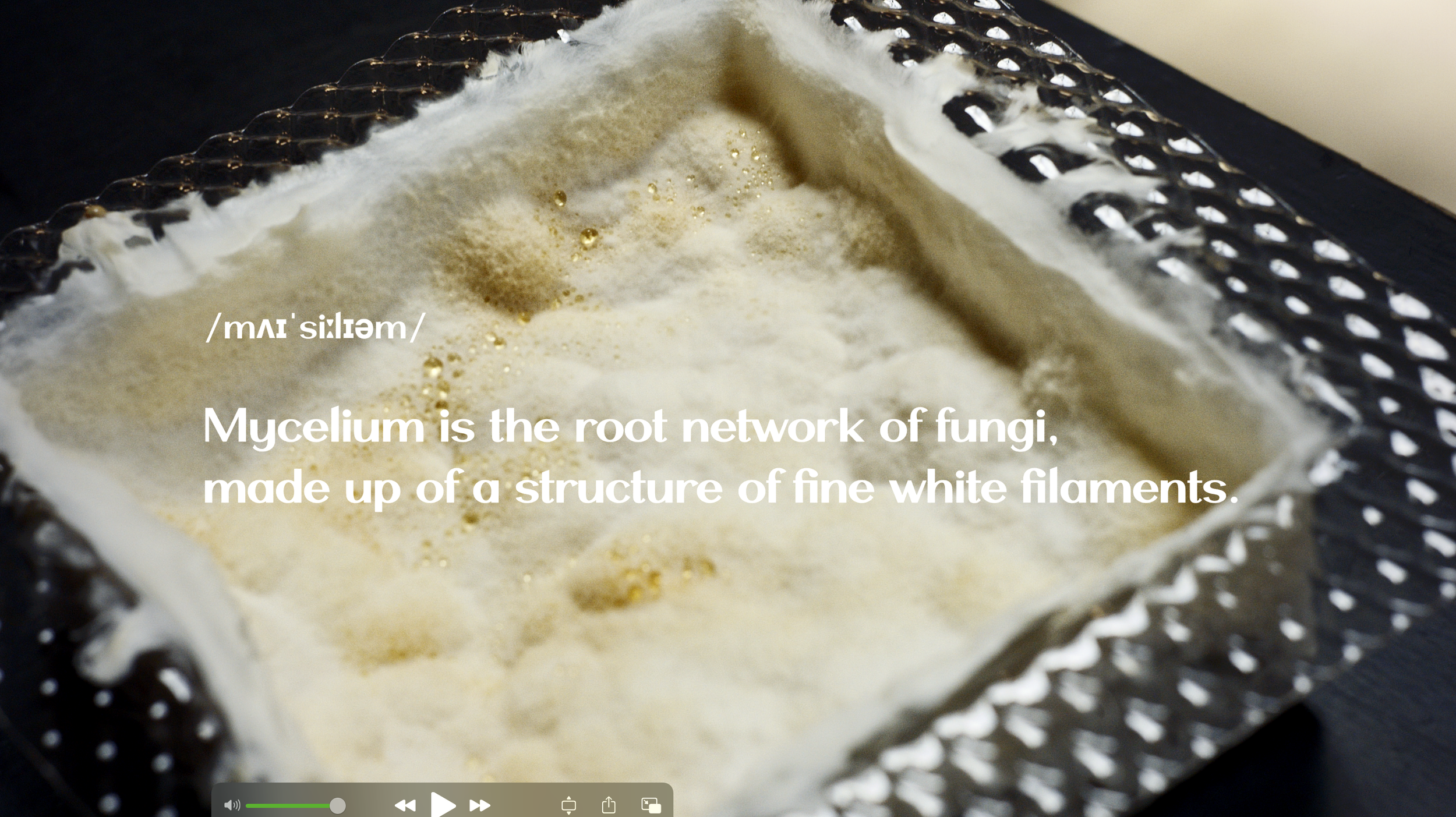RESEARCH
PORTFOLIO
RMIT MASTERS OF FASHION & TEXTILE TECHNOLOGY
Hello, I'm Amanda, a bio-materials specialist and CEO of Fungi Solutions and educator based in Naarm, Australia.
I’m on a mission to tap the creative opportunities of fungi, by collaborating with mycelium to transform waste into something beautiful.
Enhanced Mycelium is a research project in partnership with the Australian Research Council and RMIT University to explore the textile technology properties of mycelium-based leathers (MBLs) and the application of this regenerative material in protective safety equipment.
While mycelium composites have been studied for their mechanical and insulation properties in the context of construction and packaging, there is a significant gap in the literature exploring the properties of the flexible fungal materials in the context of fashion and textiles technology.
AMANDA MORGAN
Contact : amanda.morgan2@rmit.edu.au
Figure 1
Melbourne City Conversations Headshot, Sam Biddle, City of Melbourne, 2024.
Supervisory Team:
Prof. Steve Michielsen
Prof. Lijing Wang
Prof. Cuie Wen
“
In acknowledgement of the Wurundjeri Woi Wurrung People of the Kulin Nation, the custodians of the land.
This work has been conducted on land that was never ceded, with hope that we will be guided by the wisdom of the earth to respect all who belong with this sacred place.
”
This project has been supported by the Australian Research Council Scholarship in Multilayered Safety Clothing for Personal Protective Equipment that has allowed this research to be undertaken with thanks to the supervisory team, and the School of Fashion & Textiles experts within RMIT University.
Figure 2
Mycelial Landscapes — Mycelium Based-Leather Natural Tonal Range, A.Morgan, 2024.
WHY FUNGI?
Figure 3
Medbury, E. (2021) Fungi Solutions, STEM Content Stream — Woven with Fungi.
Mycelium is the inter-meshing root network of fungi.
Due to the web like nature of the roots it grows to create lightweight, durable and insulating materials.
-
Mycelium is a broad and emerging category of biotechnology and natural materials being explored across many industries. We use fungi in applications in construction, packaging and interiors.
-
Commonly across these industries and in the literature they are noted for the following properties:
Low-cost and made from agricultural waste feedstocks.
A Lightweight, airy structure created by the roots.
Durable materials when dried, with excellent compressive strength.
Insulating thermally and acoustically due to the air pockets in mycelium formation.
Fire retardant and self-extinguishing due to chitin base and char production.
Grown in 4 days typically very low impact, and low input regenerative manufacturing processes.
A regenerative life cycle with the raw mycelium producing compostable materials that nourish the soil, increase water retention and aerate the soil biome.
A method of carbon capture through diverting organic waste resources from landfills where decomposition releases methane.
-
The academic exploration of mycelium as a innovative material category is a growing field. Key studies have been able to highlight some of the performance properties of the materials and explore potential industry applications. Fungal materials technology and biodesign in this area is an emerging field, worthy of further exploration.
This literature review is an exploration of the published materials characteristics across construction, packaging and textile applications in order to assess viability for novel material development in performance textile technology.
-
While some initial research has been conducted on Mycelium Based-Leathers, the majority of the studies focus on the rigid composite forms, leaving a gap in the literature for Flexible Fungal Materials to be researched, and novel applications for the materials to be developed.
Figure 4
Morgan, A. (2024) Enhanced Mycelium Journal, Layered cotton fiber washi paper, PBI Enforcer Gold with frayed weave, mycelium leather and recycled paper.
PROJECT MAP
Chapter 1 — INTRODUCTION TO ENHANCED MYCELIUM
Chapter 2 A GROWING BIOTECHNOLOGY — MYCELIUM MATERIALS IN REVIEW
Chapter 3 Literature Analysis — MYCELIUM MADE
Chapter 4 Research Proposal — METHODOLOGY
Chapter 5 Experiment Design — MATERIAL RESULTS
Chapter 6 Synthesis — ENHANCED MYCELIUM RESULTS
REFERENCES
GLOSSARY
FIGURE LIST




